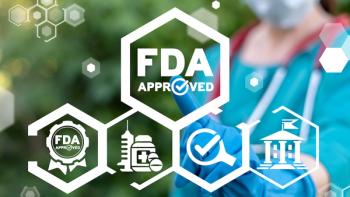
Effexor HR
This dual-acting antidepressant is believed to exert its effect through the inhibition of neuronal serotonin and norepinephrine reuptake. Venlafaxine was approved on November 18, 2005, for the treatment of panic disorder, with or without agoraphobia, as defined in the Diagnostic and Statistical Manual of Mental Disorders, Fourth Edition (DSM-IV).
Venlafaxine extended-release capsules
WYETHSNRI approved for panic disorder
This dual-acting antidepressant is believed to exert its effect through the inhibition of neuronal serotonin and norepinephrine reuptake. Venlafaxine was approved on November 18, 2005, for the treatment of panic disorder, with or without agoraphobia, as defined in the Diagnostic and Statistical Manual of Mental Disorders, Fourth Edition (DSM-IV).
Efficacy. The efficacy of venlafaxine in the treatment of panic disorder was established in 2 double-blind, 12-week, multicenter, placebo-controlled trials in adult patients meeting DSM-IV criteria for panic disorder with or without agoraphobia. Patients received fixed doses of 75 or 150 mg/d in one study and 75 or 225 mg/d in the other study. Efficacy was assessed based on 3 different outcome measures: 1) percentage of patients free of full-symptom panic attacks on the Panic and Anticipatory Anxiety Scale (PAAS); 2) mean change from baseline to end point on the Panic Disorder Severity Scale (PDSS) total score; and 3) percentage of patients rated as responders (much improved or very much improved) on the Clinical Global Impressions (CGI) Improvement scale. Each venlafaxine dose demonstrated significantly improved efficacy over placebo for all 3 variables in both trials. In a third, longer-term study, adult outpatients meeting DSM-IV criteria for panic disorder who had responded during a 12-week open phase with venlafaxine (75 to 225 mg/d) were randomly assigned to continue the same dose or switch to placebo for observation of relapse under double-blind conditions. In the randomized phase following the 12-week open-label period, patients who continued receiving venlafaxine experienced a significantly longer time to relapse.
Dosing. For the treatment of panic disorder, it is recommended that initial single doses of 37.5 mg/d of venlafaxine be administered for 7 days. Patients not responding to 37.5 mg/d of venlafaxine may have their dose subsequently increased to 75 mg/d for 7 days, followed by increases of 75 mg/d at 7-day intervals to a maximum dose of 225 mg/d. Venlafaxine should be administered in a single dose with food either in the morning or in the evening at approximately the same time each day. Each capsule should be swallowed whole with fluid and not divided, crushed, chewed, or placed in water, or it may administered by carefully opening the capsule and sprinkling the entire contents on a spoonful of applesauce. This drug/food mixture should be swallowed immediately without chewing and followed with a glass of water to ensure complete swallowing of the pellets.
Newsletter
Get the latest industry news, event updates, and more from Managed healthcare Executive.



















































